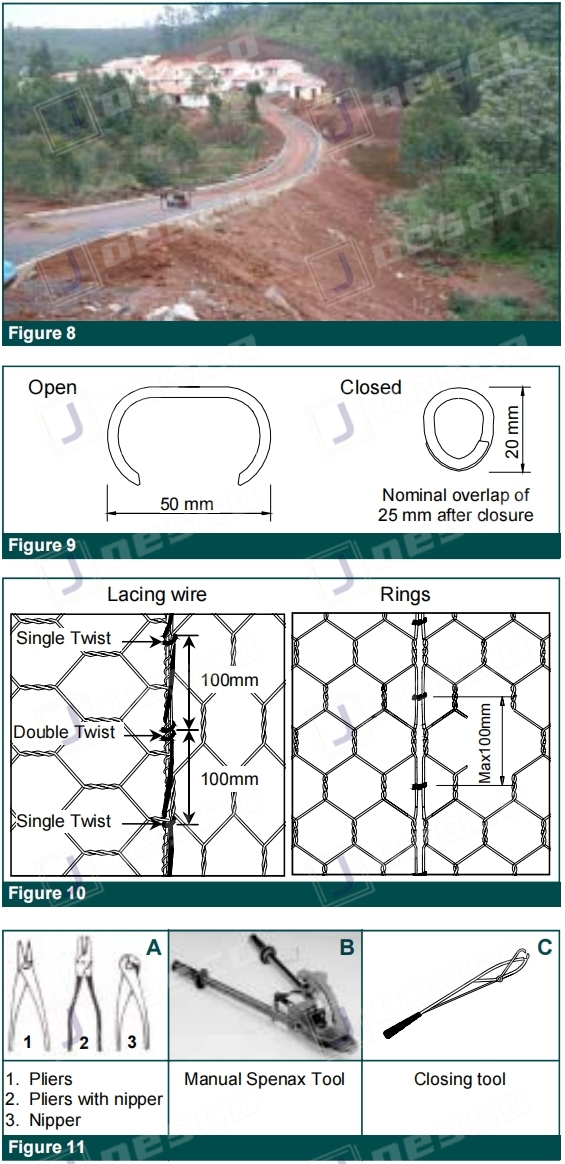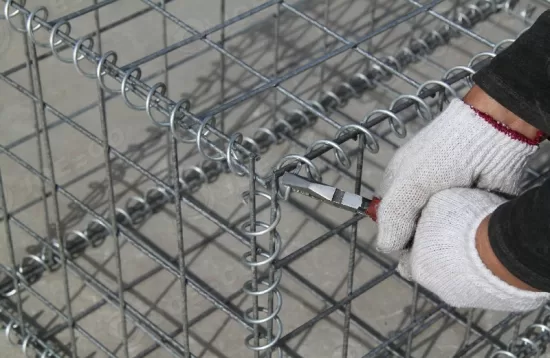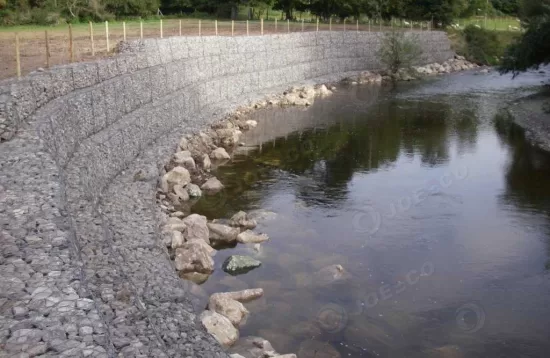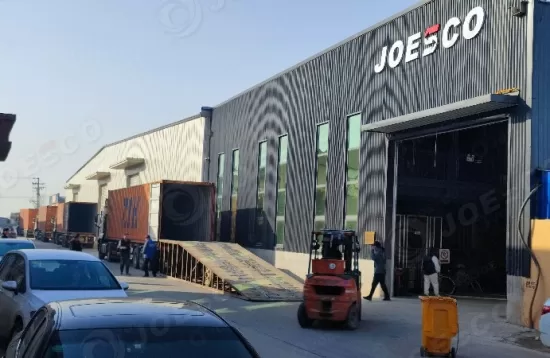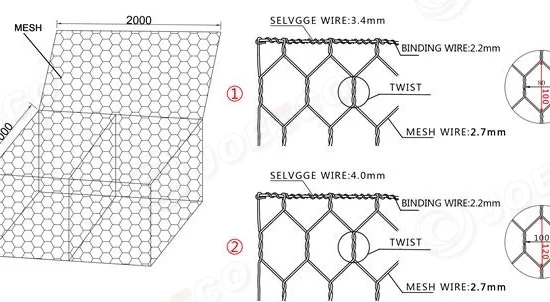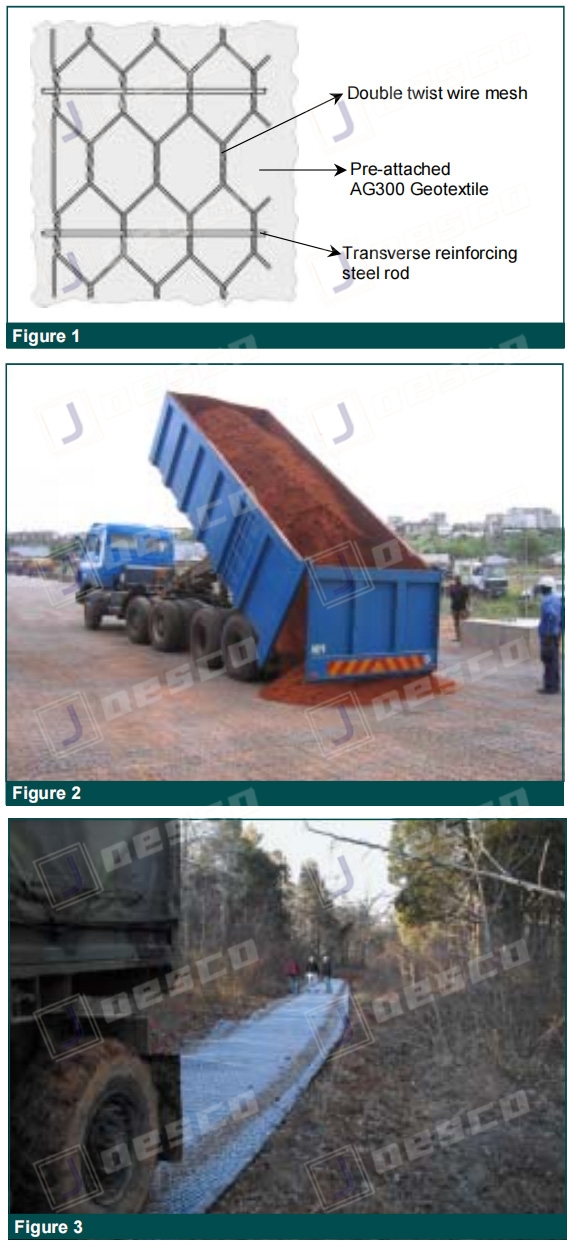 Material Delivery
Material Delivery
FlexMesh is manufactured from hexagonal woven wire with a transverse rod woven into the mesh at approximately 160mm intervals and lined on one side with a pre-attached non-woven double needle punched geotextile for separation (Figure 1).FlexMesh is supplied in roll form from the production facility in lengths of 25 m and 50 m. The roll dimension varies depending on the width and length of FlexMesh. The rolls are individually strapped at the factory for easy handling and transporting.
Ground staples and connecting fasteners are supplied separately.
Foundation preparation
FlexMesh is used as basal reinforcement in areas of poor subgrade support to improve and strengthen the founding soils (Figure 2). FlexMesh works best when founded on granular material. Leveling and clearing of the foundation is not a prerequisite before placement although a prepared surface facilitates installation. Depending on the application, the FlexMesh can be staked at prescribed intervals. Stone or coarse granular soil is then placed above and compacted. FlexMesh is deployed so that the curvature of the mesh is in contact with the foundation surface and the geotextile is below the mesh.
Unrolling
To facilitate installation, offload the FlexMesh as close to the work area as possible. FlexMesh is unrolled so that the mesh rolls off over the top of the roll rather than the bottom of the roll. This ensures that the FlexMesh is in contact with the foundation surface as much as possible. Care must be taken to ensure that during the unrolling phase, the geotextile is always situated beneath the mesh.
Fixing Procedure
Depending on the application, FlexMesh may be fixed with ground pegs at a maximum of 2 m centers if access for beachfront vehicles across an area with poor subgrade support is required(Figure 3). The suitability of the stake depends on the properties of the subgrade and the weight of the vehicle and its length, diameter, etc. would have to be verified beforehand. Where overlaps are required, connection rings (Spenax) may be used rather than the manual binding method. Rings are to be spaced no further than 100 mm apart (Figure 10).
When used for basal reinforcement FlexMesh may not require much fixing other than at the corners and every 5 m to 10 m to facilitate the construction of the next layer.
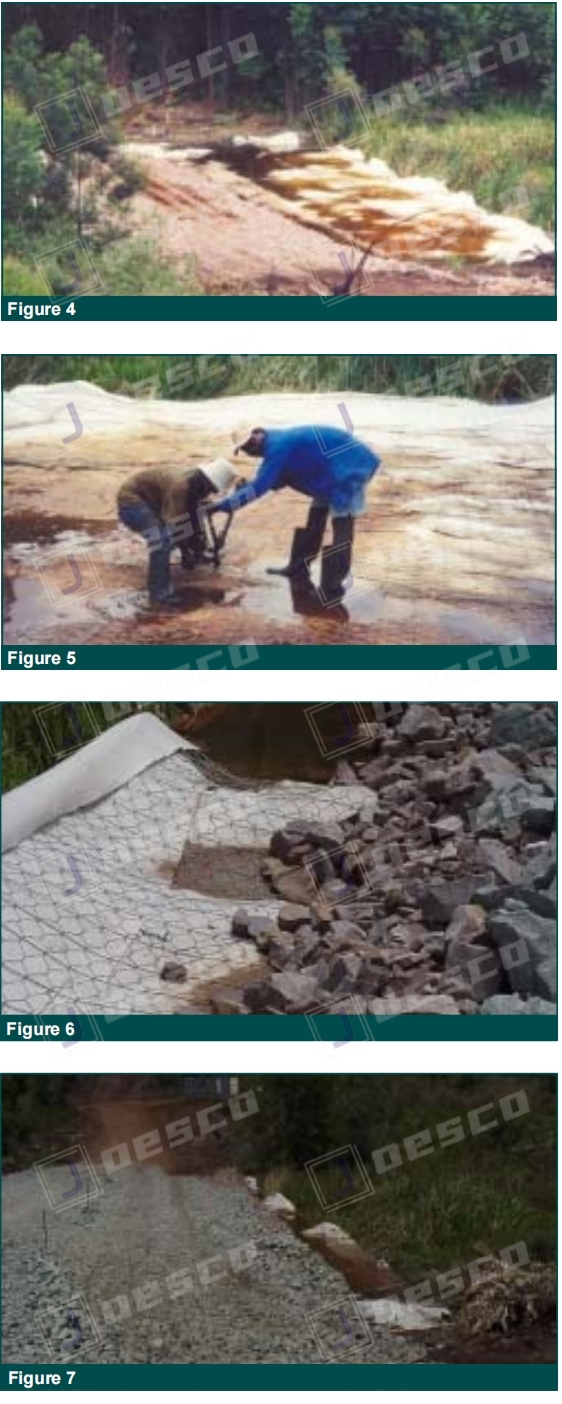
Construction
For basal reinforcement, the FlexMesh should preferably be backfilled with a minimum 500 mm coarse stone layer. The interlocking stone supported by the mesh will provide the above layer with a firm platform. The thicker the stone layer, the stiffer the platform. The geotextile in all cases acts as a separation layer and prevents the stone layer from contamination by the poorer underlying subgrade. The coarse stone layer also serves as a drain alleviating excess poor water pressure during the consolidation and settlement phase.
Overlapping
Overlaps of 500 mm transversely and 300 mm longitudinally are recommended as a minimum. When overlapping, fixing the overlap using connecting rings (Figure 9) shall be carried out as per the previous procedure. When steel ring fasteners are used, the custom-made Zhengyang Manual Spenax Tool (Figure 11) is required and is available for hire.
